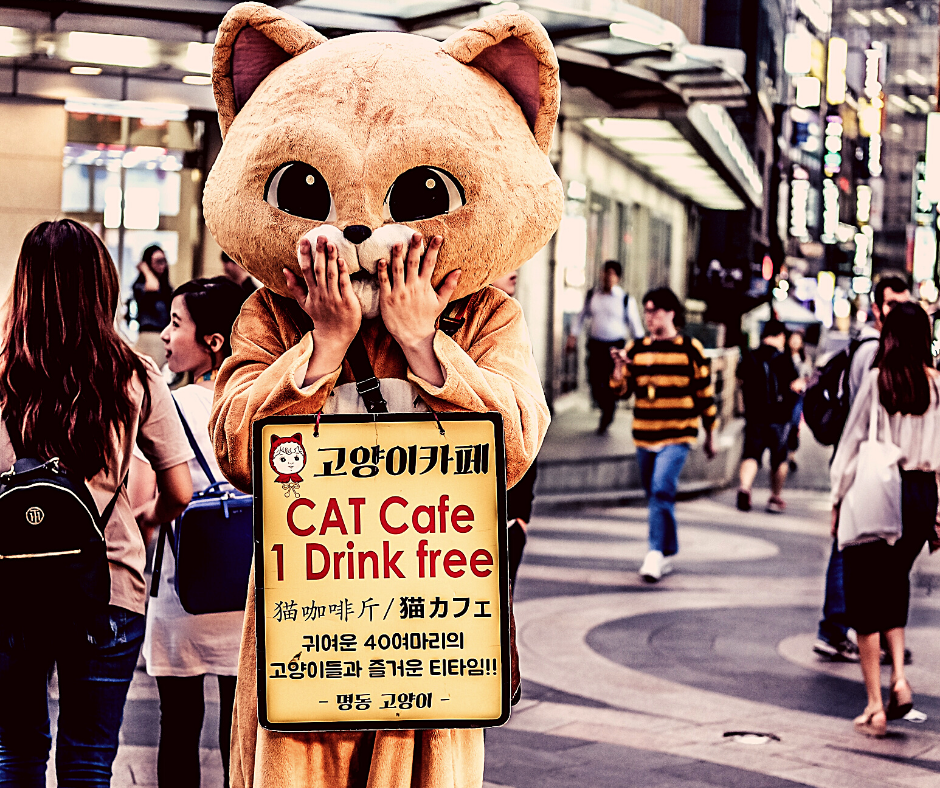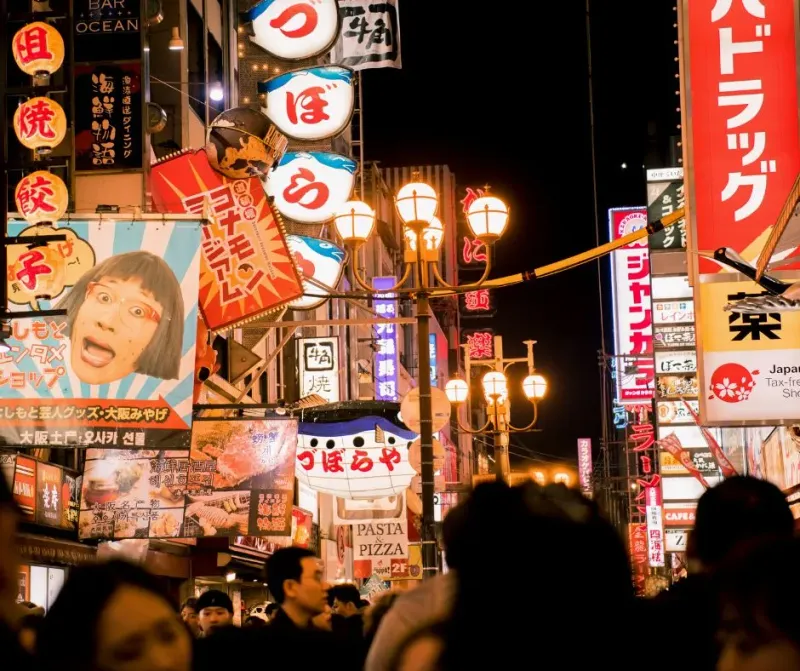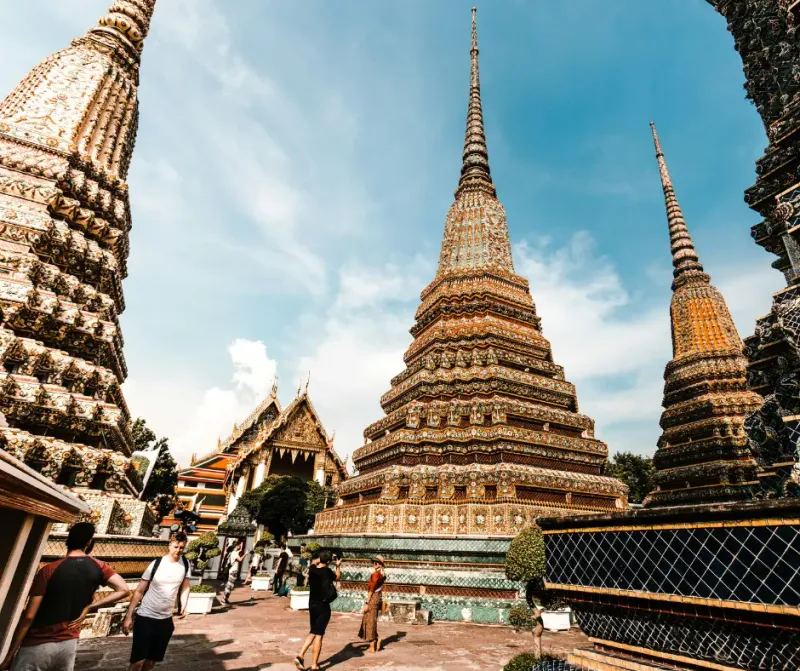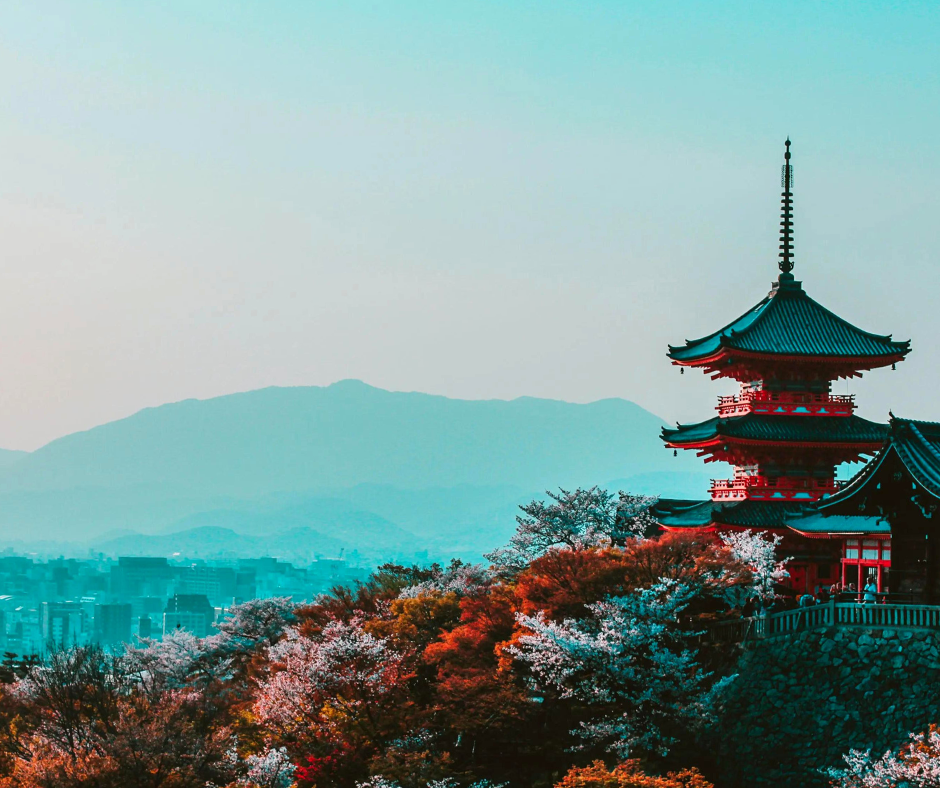From the pink-colored countryside during the cherry blossom, snow-peaked Mount Fuji, or flickering neon signs of Tokyo - Japan is a mesmerizing country.
Japan is for foodies, nature and outdoor lovers, culturally interested travelers, tech enthusiasts, and those seeking a spot where history and modernity exist alongside.
The constitutional monarchy consists of nearly 4,000 islands which are covered by mountains and lush forests and are home to diverse wildlife. It is home to giant world-class technology and celebrated innovations.
Did you know that the first geishas were men?
🌱 Travel health insurance for Japan
💡
Genki Explorer is a travel health insurance with worldwide cover. Monthly payment plans, and easy signup in less than 1 minute.
The table of content will be generated here
🇯🇵 Entry requirements for Japan
- Valid visa: Passport holders of China, Russia, Philippines, Vietnam or CIS countries have to apply for a visa before entering Japan.
- Covid-19 regulations: All travelers and returnees coming from China or Macau will be required to take an on-arrival test and additionally have to submit a certificate showing a negative test result, conducted within 72 hours prior to departure with or without a vaccination certificate.
- Travel health insurance: The government highly recommends having international travel insurance before entering Japan.
✈️ How to get to Japan
- Plane: Japan serves several international airports. The most important airports are Tokyo and Osaka. Narita International Airport (NRT) in Tokyo is the largest international airport and is located 60 kilometers east of Tokyo. Southwest of Osaka, there is Kansai International Airport (KIX). Kansai International Airport is your best option when traveling to Kyoto.
- Airport transfer: Get the Japanese Rail Pass and hop on one of the express trains. Tokyo and Osaka are around 45 to 55 minutes away from their airports.
🏡 How to find a place
- dash: The site offers furnished apartments, rooms, and coliving options, currently only in Tokyo but worth checking.
- Airbnb: Plenty of availabilities are found on Airbnb and it is very common to book a stay through Airbnb. If you are looking for Airbnb deals, sign up for RemoteBase, and you receive discounted Airbnb twice a month.
- Hotels: Check out accommodation via agoda.com and booking.com. If you want to be close to a specific location, check hotels on Google Maps.
🚌 Public transport in Japan
- Train: Purchase the Japan Rail Pass, a multi-use ticket that is valid for all trains, including Shinkansen and Narita Express trains. You can select passes for 7, 14, and 21 days.
- Metro: Most major cities in Japan have an extensive metro network such as Tokyo, Osaka, and Kyoto. A day pass in Tokyo and in Kyoto is 4.30 Euro. You pay 5.70 Euro for a ticket to Osaka.
- Bus: City buses are a good and reliable way to get around. Many cities offer buses that drive along a sightseeing route.
- Taxi: For some hidden spots you can take a taxi, which is mainly in front of all train stations, airports and next to bigger junctions. For non-Japanese speakers, it is advisable to have the Japanese address of your destination on a piece of paper or marked on a map. Japanese generally will not take advantage of their clients, however, English-speaking taxi drivers are not very common. It costs around 3 Euro (400 Yen) to 5 Euro (700 Yen) for a distance of 1 to 2 km. Every additional 500 meters costs 0.70 Euro.
- Bicycles: Biking is a fun, healthy, and affordable way to explore Japanese cities. Many hotels and hostels provide free bikes for their guests or rent them for a fee between 7 and 10 Euro per day.
🏘 Where to stay in Tokyo
- Shibuya: The famous Shibuya district is a popular and very central area to stay. You have all facilities you need within walking distance. As space is rare and expensive in Japan monthly rents can crawl up to 3,500 Euro for a single room.
- Nippori: The district is popular among students. Lower prices mean lower living standards and the quality of the building. The monthly rent is reasonable around 1,500 Euro.
- Meguro: Meguro is a great mix of residential, commercial, and cultural neighborhoods. You find art galleries, museums and parks along the Meguro River.
🧑🏻💻 Where to work from in Tokyo
Coworking spaces
- Blink Smart Co Work Space: A go-to coworking space in Tokyo is Blink Smart Co Work at Roppongi. Based in the heart of Tokyo, the community-driven space focuses on its international community, fresh coffee, and delicious food. A monthly membership is available for 211 Euro.
- The Hive: Another centrally located coworking space is The Hive Jinnan. Modern-designed workspaces, a photogenic café, and a nice outdoor terrace make a great work spot. The price for a monthly membership starts at 233 Euro.
Coffee shops
- Cafe Salvador: The mix of café and coworking space offers comfortable seating, tasty food, and refreshing drinks. A day pass is 13 Euro. The prices include drinks and fast wifi.
- Awesome Store & Cafe Ikebukuro: The café is quite popular among digital nomads due to its workability and free high-speed internet connection. While working order some bagels, coffees, or Japanese sweets.
🏘 Where to stay in Osaka
- Tennoji: Tennoji has a long residential history and is home to Shitennoji, the oldest temple of Osaka. If you are looking for budget-friendly accommodation and an authentic Japanese lifestyle next to trendy cafés, then consider Tennoji.
- Kita: The northern district is known to be the business district with tall, modern skyscrapers and luxurious office buildings. You find shopping malls here, retail, restaurants, and entertainment. The area is pedestrian-friendly and is well-connected with public transportation.
🧑🏻💻 Where to work from in Osaka
Coworking spaces
- Osakan Space: The community-focused coworking space is located in the bustling business district of Osaka and next to the central Honmachi station. The team creates a growing community, with community lunches and social activities such as potluck parties, creative workshops, or IT sessions. You can purchase a monthly pass for 115 Euro.
- The Deck: The coworking space, directly connected to Sakaisuji Honcho Station is a modern 2-Floor coworking space with an open working area, a DIY space, including 3D-Printer or laser cutter, and lounge areas for having a nap or just relaxation. A monthly membership costs 100 Euro.
Coffee shops
- Brooklyn Roasting Company: The venue is located in Namba and is a perfect spot for digital nomads, as it is quiet and well-equipped with comfortable seating and power sockets.
- &Island: The industrial-styled café has sandwiches and coffee specialties on its menu which you can enjoy on their terrace or inside. The view is amazing and you will also have enough seating options, power sockets, and fast wifi.
🚊 How to travel around
Japanese transportation standards are famous worldwide. Public transport is on time and provides high standards of cleanliness and professional service.
- Plane: Domestic Air travel in Japan is dominated by Japan Airlines which serves over fifty national airports.
- Train: Japan's four major islands provide an extensive and reliable network of railways. You might have heard of Japan's high-speed Shinkansen trains, running up to 320 km/h. In general, trains are a convenient way for visitors to travel around Japan, especially when making use of the Japan Rail Pass.
🎖Must see
- Nezu Shrine: Located near Ueno Park you can find one of Japan’s oldest shrines. Nestled in lush greenery you can walk inside the wooden structure and if you visit in spring you might witness marriage ceremonies in between the colorful azalea blossoms.
- Senso-ji: The temple is the city's most popular and oldest one, located at the end of a shopping street called Nakamise-dōri. The multi-level pagoda is surrounded by lush gardens and colorful small halls. The entrance is free.
- Sumo: Sumo wrestling tournaments take place for 15 days in January, May, and September every year. In between the tournaments, you can visit training sessions. During one session (1-2 hours) you have to be absolutely quiet. It's definitely worth a visit.
- Osaka Castle: The historical castle was built back in 1583, by more than 100,000 workers. After it got destroyed it got renovated in 1931 and is still one of the most impressive buildings in Osaka. When visiting the castle you can explore a historical collection of weapons and traditional artwork. The castle is surrounded by citadels, over 600 cherry trees, impressive stone walls, and moats. The closest metro station to Osaka Castle is Osakajokoen station. The admission fee is 600 Yes (4.24 Euro) for the tower and 200 yen (1.41 Euro) for Nishinomaru Garden.
- Onsen: The natural hot springs are very popular among locals and tourists. You can book a full retreat in one of the thousands of resorts throughout Japan. Or visit the Oedo Onsen Monogatari in Tokyo. The theme park facilitates many indoor and outdoor pools as well as a sauna and other entertainment.
- Memory Lane: The memory lane (Omoide Yokocho), which is also known as Piss Alley, due to missing toilets during the Second World War, is a labyrinth of small alleys, tiny Japanese-style restaurants, and small bars. Nowadays public toilets are available.
- Dotonbori: Dotonbori is next to the river and a popular spot for having a drink or a night out in Osaka. You will find many cafés and restaurants with roof terraces and venues offering live music or karaoke.
💡Good to know
- Internet: The average internet speed for fixed broadband is 143.33 Mbps download and 94.21 Mbps upload.
- Socket Type: Type A, Type B.
- Sim card: Recommended pre-paid options are available by Japan Wireless or mobal. Japan wireless costs around 40 Euro per month. Mobal offers similar prices for a 5 GB package.
- Climate: Japan has four seasons, ranging from subarctic in the north to subtropical in the south. In the north Japanese summer are warm and winters very cold with temperatures down to 0°C.
- Safety: According to the Global Peace Index, Japan ranks number 10 of the safest countries worldwide.
- Digital nomad community: Tokyo is a good starting point for digital nomads. Easy transport, widely English-speaking locals, and yet a multicultural population combined with many coworking options. Osaka is becoming a bigger hub for expats and digital nomads alike.
- Currency: Official currency of Japan is the Yen. 1 Euro is 142 Yen.
🚧 What to avoid
- Don't mess with chopsticks: When eating the Asian way, bear in mind that ist rude to rub chopsticks together before eating. Also placing the chopsticks vertically in your bowl or pointing with your chopsticks is assumed to be rude.
- Shoes inside: As in many other cultures too, Japanese homes should be entered without shoes. Usually, slippers will be available around.
- Blowing nose in public: Already before the pandemic hits, blowing your nose in public is considered to be uncouth. People would wear facemasks if they have a cold and blow their noses only in bathrooms or private places.
- Tipping: Japan does not have a tipping culture and service is always included in prices. It can even be considered an insult.
- Pointing with your finger: Pointing at people in Japan is also considered to be rude as the Japanese would gently wave their hands for indicating directions.
- Using one hand only: Avoid using one hand only by receiving or giving things. Japanese would always use both hands as a gesture of politeness.
🚴🏻♀️ How to stay healthy
Stay active
- Hiking: Japan is an extremely mountainous country and hiking is a very popular activity. Check out Mount Takao, an easy one-hour hike only one hour's drive outside Tokyo. Once you have reached the top, you will get rewarded with an amazing panoramic view of Tokyo and Mount Fuji.
- Relax at a Tea Garden: What else could be more relaxing after a day of hustle and bustle in Tokyo than a traditional Japanese tea ceremony? Check out the rated recommendations on where to get the best tea ceremony in town.
- Onsen: Onsen are the natural hot springs popular throughout Japan for relaxing and calming down. Depending on the mineral composition of the onsen, it is supposed to be helpful for everything from eye disease to assuaging lower back pain.
Health Risks
- Water Quality: Yes, generally you can drink tap water in Japan.
- Air Quality: The air quality in Japan is good.
💡
Where to travel next? Destinations close to Japan
South Korea for nomads
Describing South Korea in only three words would include service, soju, and smartness. The technology-driven state in the southern part of the Korean peninsula is delivering superb quality of service and innovation directly extracted out of the gigantic Seoul’s Digital Media City, a former landfill.…

Taiwan for nomads
The island of Taiwan is located east of mainland China, and despite fighting for its sovereignity and independence, Taiwan is a peaceful and multi-cultural modern country. Taiwan has the size of Belgium but with a population of 23 million residents. More than 50 % of the island is uninhabited land,…

Easy travel planning for Asia
Are you looking for the top digital nomad hotspots in Asia? Or for destinations off the beaten track? Maybe you are budget-sensitive and you are looking for affordable but cozy destinations. Browse through this list of places in Asia, organized by interest. From chilled beach extensions to the top t…








